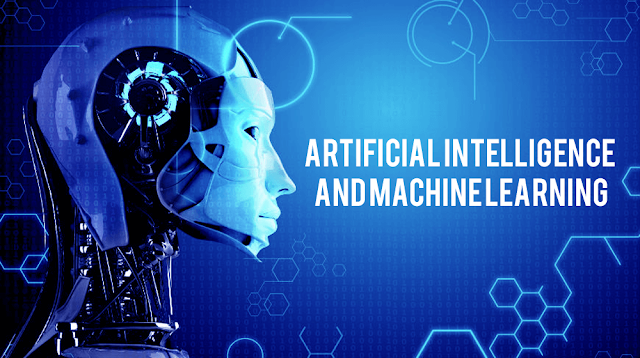Artificial Intelligence (AI) and Machine Learning (ML): An Overview
 |
| Artifical-Intelligence-Machine-Learning |
Artificial Intelligence (AI):
1. Definition:
- AI refers to the simulation of human intelligence in machines that are programmed to think, learn, and problem-solve like humans.
2. Types of AI:
- Narrow or Weak AI: Designed to perform a specific task (e.g., virtual personal assistants).
- General or Strong AI: Has the ability to understand, learn, and apply knowledge across different domains.
3. Applications:
- Natural Language Processing (NLP): Enables machines to understand, interpret, and generate human-like text.
- Computer Vision: Allows machines to interpret and make decisions based on visual data.
- Expert Systems: Utilizes knowledge bases to solve complex problems in specific domains.
4. Ethical Considerations:
- AI raises ethical concerns related to bias, transparency, accountability, and job displacement.
- Ensuring ethical AI involves responsible development and deployment practices.
Machine Learning (ML):
1. Definition:
- ML is a subset of AI that focuses on the development of algorithms allowing systems to learn and make predictions or decisions based on data.
2. Types of Machine Learning:
- Supervised Learning: Trains the model on a labeled dataset (input-output pairs).
- Unsupervised Learning: Deals with unlabeled data, where the algorithm must find patterns or structures.
- Reinforcement Learning: Involves training models to make sequences of decisions based on rewards and punishments.
3. Algorithms and Techniques:
- Linear Regression: Predicts a continuous outcome based on input features.
- Decision Trees: Builds a tree-like structure to make decisions based on input features.
- Neural Networks: Mimics the structure and function of the human brain to process complex data.
4. Applications:
- Predictive Analytics: Forecasting future trends based on historical data.
- Image and Speech Recognition: Identifying and interpreting visual or auditory data.
- Recommendation Systems: Recommending products or content based on user preferences.
5. Challenges:
- Data Quality: ML models heavily rely on high-quality, representative data.
- Interpretability: Understanding and explaining the decisions made by complex models.
- Bias and Fairness: Addressing biases present in training data and models.
Integration of AI and ML:
1. Deep Learning:
- A subset of ML that involves neural networks with multiple layers.
- Widely used for image and speech recognition, natural language processing, and more.
2. AI in Business:
- Businesses leverage AI and ML for tasks such as customer service, demand forecasting, and process automation.
- Improves decision-making processes and operational efficiency.
3. Future Trends:
- Explainable AI (XAI): Focus on making AI systems more transparent and understandable.
- Edge AI: Processing AI algorithms locally on devices rather than relying on cloud computing.
- AI for Healthcare: Advancements in medical diagnostics, personalized medicine, and drug discovery.
In summary, AI and ML are transformative technologies with diverse applications and significant potential. As they continue to evolve, ethical considerations, transparency, and responsible development practices will play crucial roles in shaping their impact on society.

